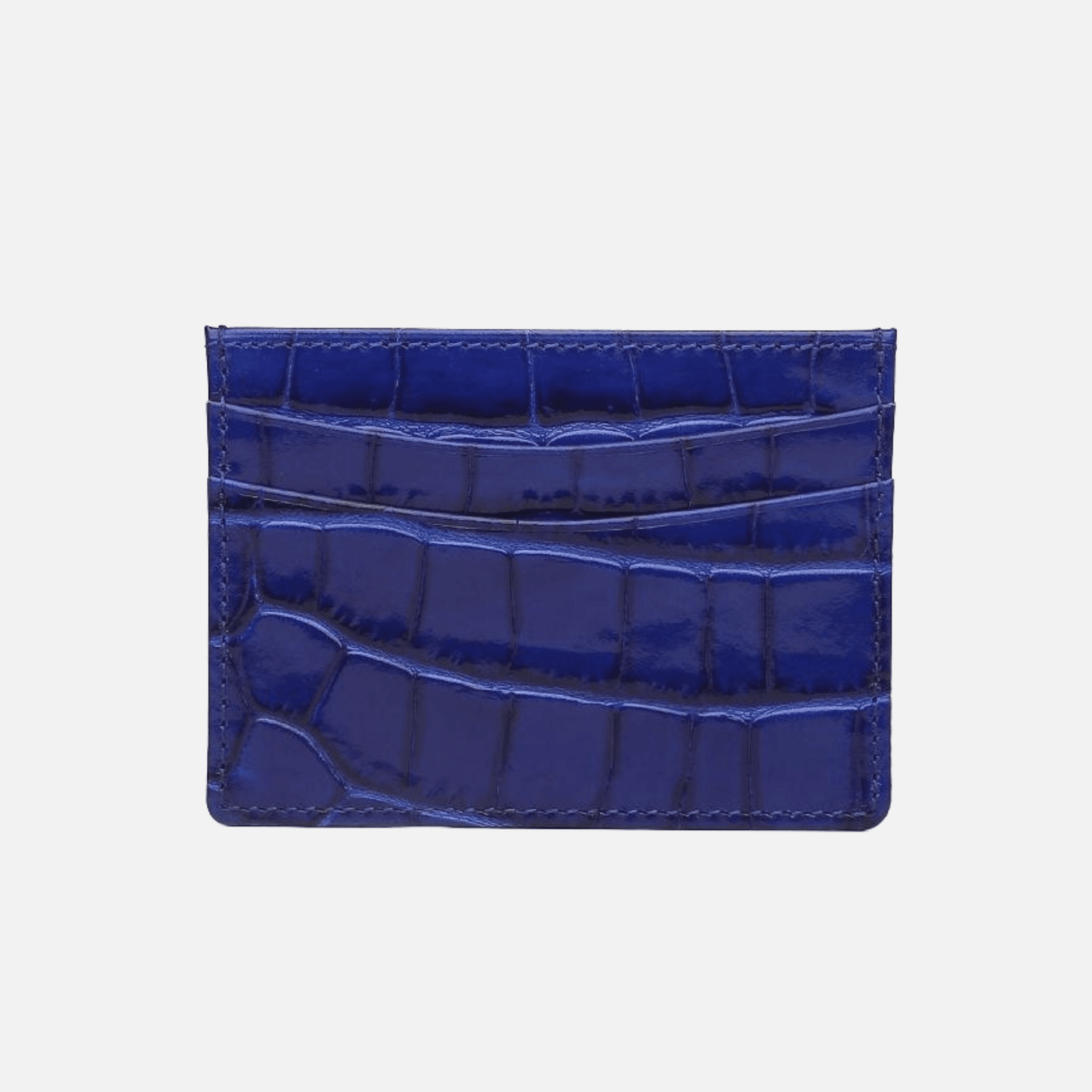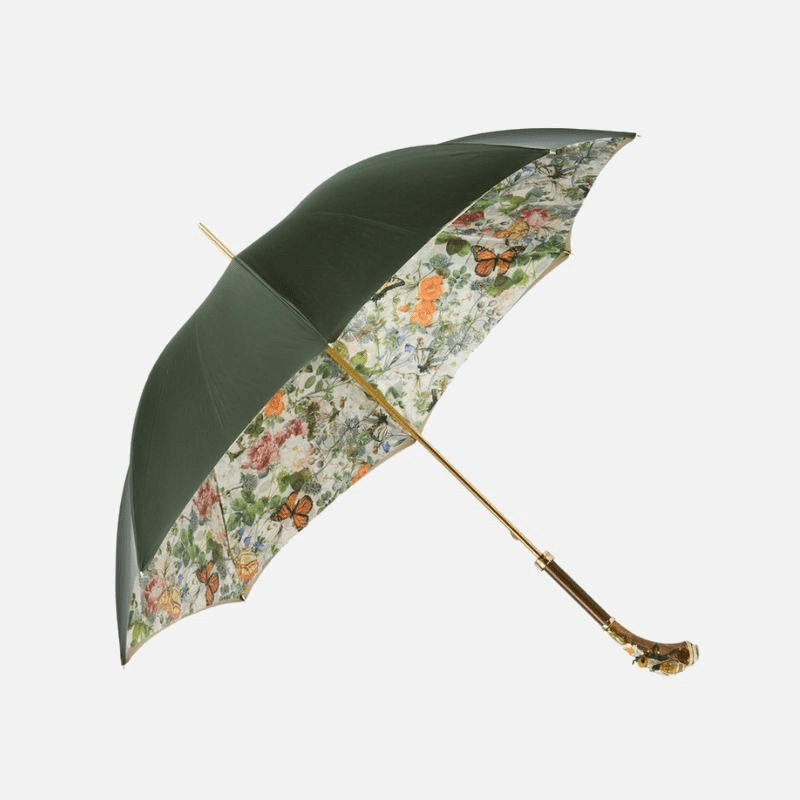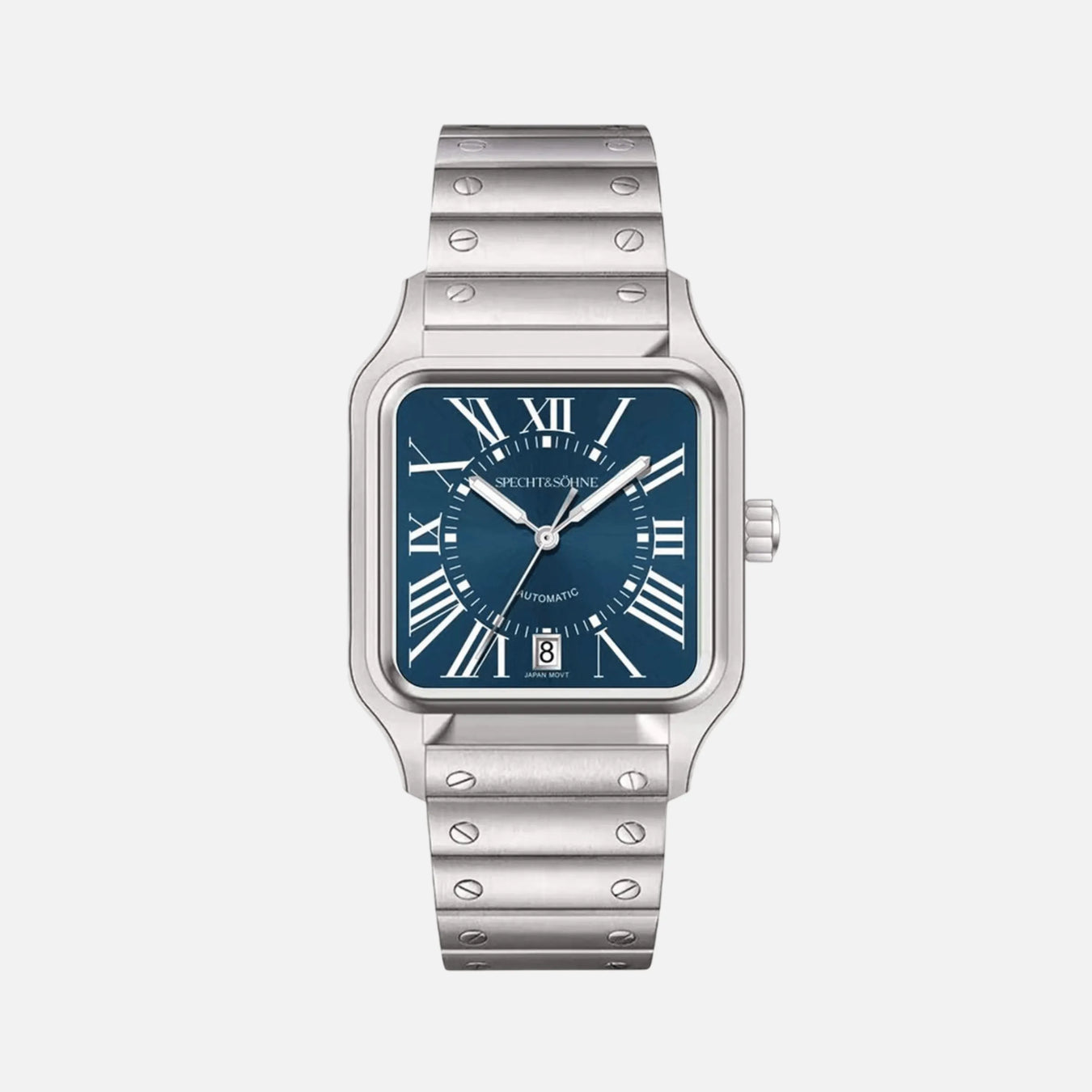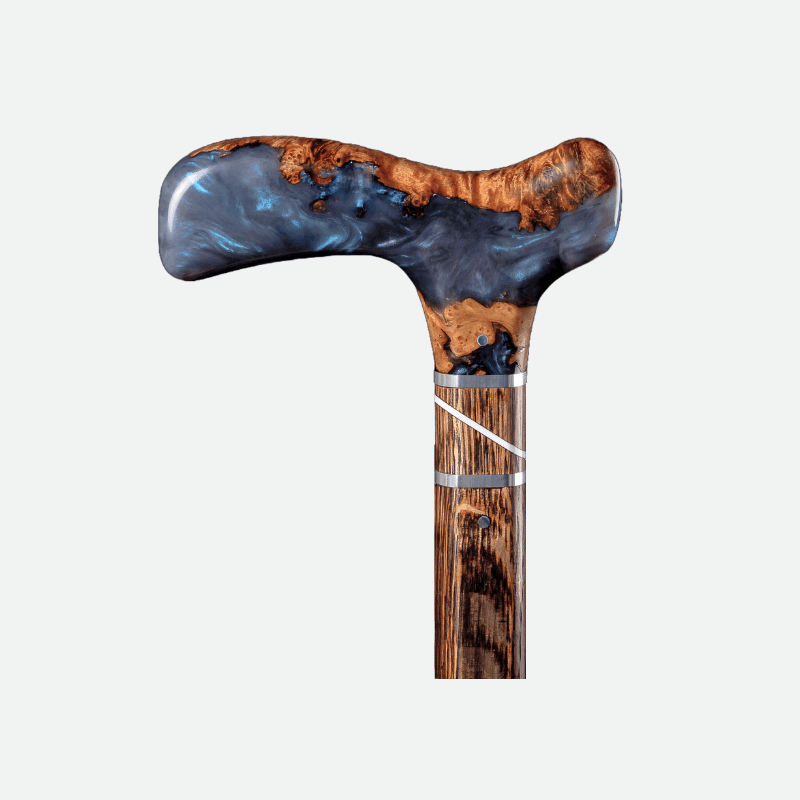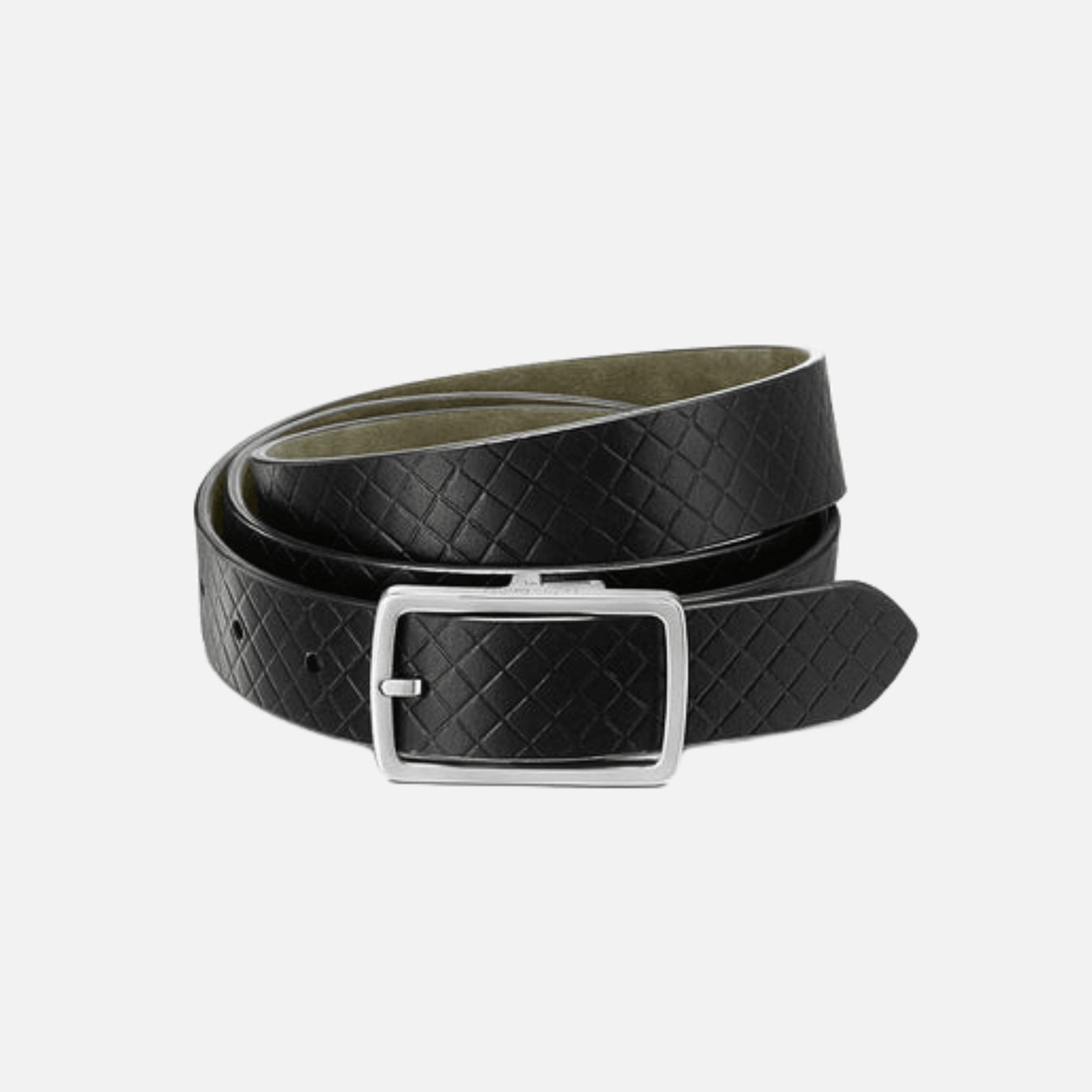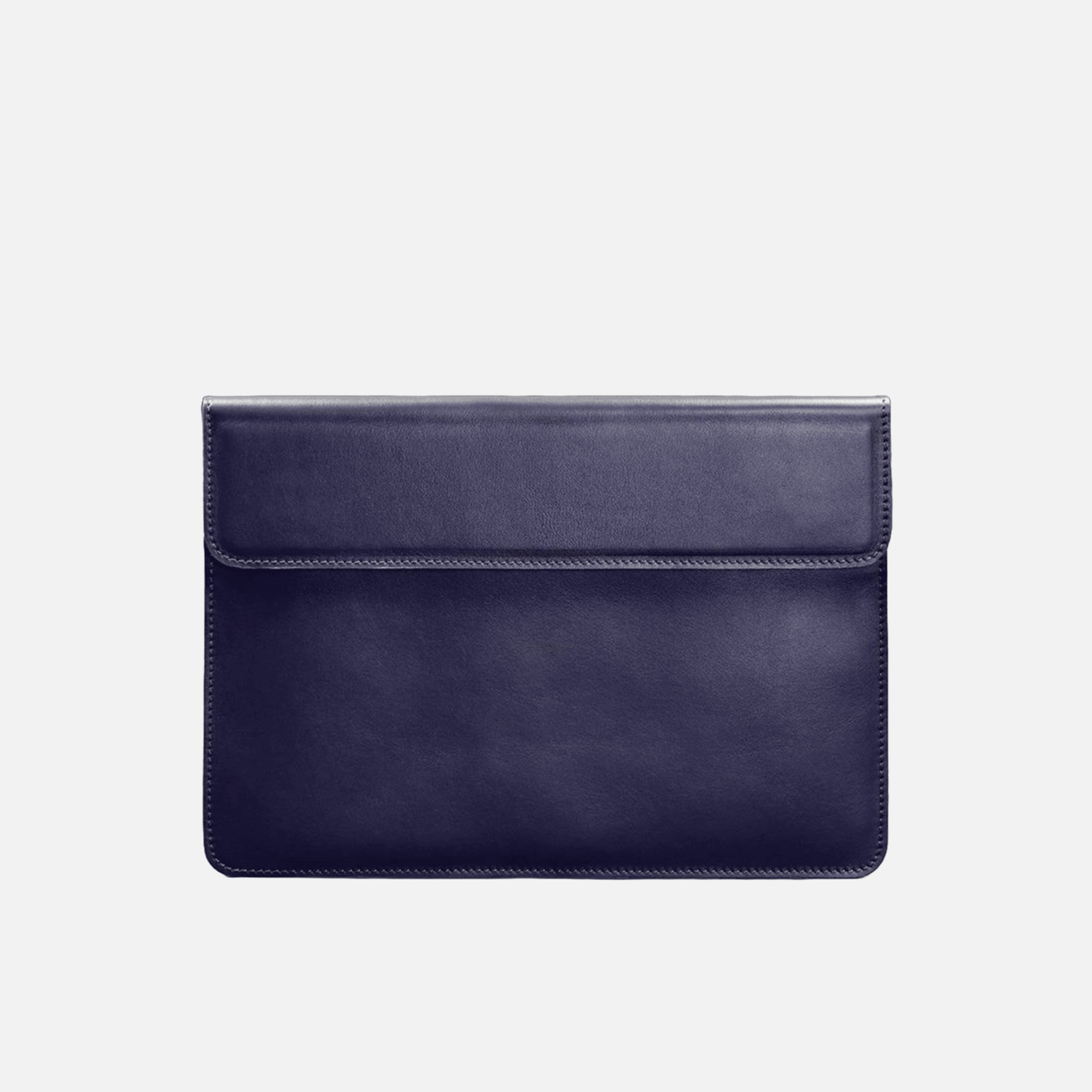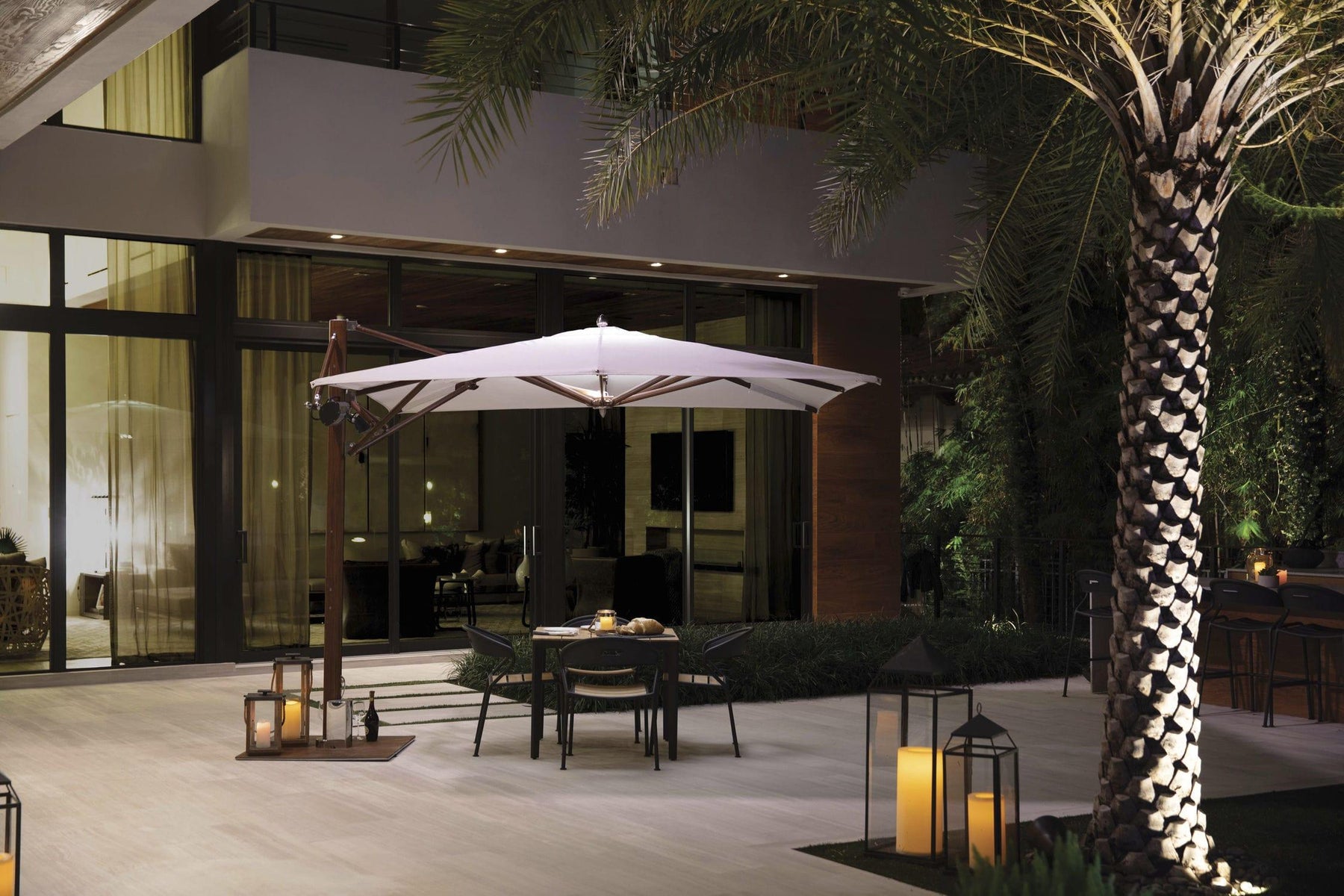
The Ultimate Guide to Choosing a Modern Outdoor Umbrella That Lasts
Introduction to Modern Outdoor Umbrella Selection
When embarking on the journey of selecting a modern outdoor umbrella, one enters a world where both design and functionality converge to elevate outdoor experiences. Contemporary outdoor umbrellas not only offer shade and protection from the elements but also serve as stylish accents to outdoor decor.
Understanding the plethora of choices available is pivotal. Firstly, modern umbrellas are designed with various opening mechanisms, from the classic hand-crank to innovative automatic systems, providing ease of use for any preference. The materials are another consideration; options include durable polyester, fade-resistant Sunbrella, or the luxurious texture of olefin fabric, each with specific maintenance and longevity characteristics.
The frame construction should not be overlooked, as it dictates the umbrella’s resilience. Choices range from aluminum, recognized for its rust resistance and lightweight nature, to wood for a traditional, natural aesthetic or steel for utmost sturdiness, albeit at the cost of increased weight.
Importantly, the umbrella’s size and shape should be matched to the space it’s intended to shade. From compact, round configurations ideal for bistro tables to expansive, rectangular canopies perfect for covering larger dining sets or lounge areas, proportions play a critical role in both aesthetic coherence and the practical span of shade provided.
With the environment in mind, today’s umbrellas can feature integrated LED lighting and solar panels, offering illumination and eco-friendly energy solutions. As one prepares to dive into this diverse marketplace, recognizing these key features will be central to making an informed, lasting choice for an outdoor umbrella.
Understanding the Various Types of Outdoor Umbrellas
When on the prowl for the perfect outdoor umbrella, it is vital to recognize the assortment available to make an informed choice. Here’s a rundown of the most common types:
Market Umbrellas
Market umbrellas are the quintessential type, often seen in outdoor cafés and residential patios. These umbrellas have a straight pole at the center and a canopy that often features a vented top for wind resistance. Market umbrellas can be made from wood, aluminum, or fiberglass, providing various levels of durability and aesthetic appeal.
Cantilever Umbrellas
Also known as offset umbrellas, cantilever umbrellas stand out for their versatility. The pole is situated to the side rather than the center, allowing for unobstructed space beneath the canopy. These umbrellas are ideal for covering seating areas, hot tubs, or large dining tables.
Tilt Umbrellas
Tilt umbrellas offer the added functionality of an adjustable angle, giving the user the ability to tilt the canopy in response to the sun’s position. This feature is particularly useful as it extends the usable hours under the umbrella without needing to move the entire structure.
Commercial Umbrellas
Built to withstand frequent use and harsher conditions, commercial umbrellas are sturdier and often larger than residential versions. They are constructed with high-grade materials for longevity and are used in business settings such as restaurants, resorts, or public pools.
Solar Umbrellas
Incorporating modern technology, solar umbrellas come with solar panels on top of the canopy. They harness sunlight to power LED lights that provide illumination once the sun goes down. These umbrellas are both practical and eco-friendly, offering lighting solutions that enhance nighttime ambiance.
Each umbrella type has its own set of features that cater to different needs and scenarios, making it important for consumers to evaluate their specific requirements before settling on a purchase.
Materials Matter: Durability and Weather Resistance
In the quest to select a modern outdoor umbrella that will stand the test of time, particular attention must be paid to two critical factors: durability and weather resistance. These characteristics are primarily determined by the materials from which the umbrella is constructed.
Firstly, the canopy fabric is paramount in affording protection from the elements. High-quality umbrellas often feature fabrics such as Sunbrella, Olefin, or Outdura which are engineered for fade resistance and can withstand extensive exposure to sun and rain without deteriorating. These materials are also mold and mildew resistant, ensuring the umbrella remains clean and hygienic even when stored away during off-seasons.
The rib and pole construction materials significantly impact an umbrella’s longevity. Materials like aluminum, stainless steel, or fiberglass offer strength, flexibility, and rust resistance. Aluminum, being lightweight yet sturdy, is prevalent for its ease of handling and inherent rust resistance. Stainless steel provides a higher resilience to deformation and corrosion, making it suitable for windy areas. Fiberglass stands out for its flexibility, bending without breaking under stress, such as heavy wind, thereby diminishing the risk of permanent damage.
Furthermore, the mechanisms and joints of outdoor umbrellas must withstand repeated use. Opt for umbrellas with robust mechanical parts that resist wear and tear. High-quality joints, made from materials like reinforced plastics or metal alloys, prevent the umbrella from malfunctioning or collapsing.
In conclusion, when choosing a modern outdoor umbrella that lasts, prioritize durable and weather-resistant materials. This selection will ensure the umbrella is a long-term investment, capable of providing shade and shelter season after season.
Size and Shape Considerations for Optimal Coverage
When selecting a modern outdoor umbrella that endures, it is crucial to consider the size and shape for maximum functionality and coverage. These factors inherently dictate the umbrella’s capacity to furnish adequate shade, complement the aesthetics of your outdoor space, and withstand environmental elements.
Primarily, size is contingent upon the area that needs coverage. Measure the space to ensure that the chosen umbrella surpasses the dimensions of the area you wish to shade. For smaller patios or balconies, a compact umbrella with a diameter of 6 to 8 feet may suffice, while larger spaces may require umbrellas with a diameter of 10 feet or more.
In terms of shape, it’s not a one-size-fits-all situation. Diverse shapes offer different coverage solutions. Here are a few common shapes and their optimal applications:
- Round/Umbrella Shape: Ideal for accompanying circular tables, providing concentric shade that aligns perfectly with the table’s dimensions.
- Square/Rectangular Shape: These are preferable for shading larger areas or rectangular tables, offering more consistent shade over angular spaces.
An often overlooked facet is the height and angle of the umbrella. Opt for adjustable umbrellas which allow for tilting. This feature is indispensable as the sun moves across the sky, necessitating changes in the angle of coverage to maintain consistent shading.
Moreover, the canopy design influences stability and wind resistance. Ventilated canopies can reduce wind pressure by allowing air to pass through, which can be beneficial in breezier locales.
Lastly, when the umbrella is open, ensure it doesn’t encroach upon walkways or impede the flow of traffic. Movement around the space should remain unhindered by the span of the umbrella when in use. Prioritizing these considerations will equip you with an umbrella that not only lasts but also maximizes comfort and usability for your outdoor area.
Mechanisms and Features for Enhanced Usability
When selecting a modern outdoor umbrella that is both user-friendly and durable, there are several key mechanisms and features to consider:
Crank Lift System: A crank lift mechanism simplifies the process of opening and closing the umbrella. With an easy-to-use handle, it is possible for anyone to operate the umbrella without exerting much force.
Tilt Functionality: Modern umbrellas often come with a tilt feature that allows users to adjust the angle of the canopy. This is particularly useful for providing shade throughout the day as the sun changes position.
Robust Frame Construction: A sturdy frame made from materials such as aluminum or reinforced steel can withstand various weather conditions and resist corrosion and rust, enhancing the umbrella’s lifespan.
High-Quality Canopy Fabric: UV-resistant and waterproof fabrics, such as Sunbrella or polyester, offer protection from the sun’s harmful rays and repel water, ensuring the umbrella remains vibrant and functional for years to come.
Integrated LED Lighting: Some contemporary umbrellas include LED lights along their ribs or a central light at the top. This feature extends usability into the evening, providing a convenient illumination source for nighttime gatherings.
Wind Vents: Adequate ventilation is essential to prevent inversion during sudden gusts. Wind vents allow air to circulate and reduce the risk of the umbrella toppling over.
Easy Storage Options: Umbrellas that offer a straightforward mechanism for collapse and store compactly are beneficial, especially for spaces where they may need to be stowed away seasonally or during harsh weather.
Each of these mechanisms and features contributes to a hassle-free and pleasurable experience. By prioritizing these when making a purchase, one can ensure they choose an outdoor umbrella that is not only resilient but also delights in its everyday use.
UV Protection and Fabric Choices
When selecting a modern outdoor umbrella that endures the test of time and nature, special attention must be paid to UV protection and the type of fabrics used. The umbrella’s primary role—aside from its aesthetic contribution—is to provide shade and shield against harmful ultraviolet radiation that not only affects human skin but also degrades the material itself over time.
To ensure maximum UV protection, it is imperative to choose an umbrella made with high-quality, UV-resistant fabrics. Materials such as solution-dyed acrylic or polyester are popular choices due to their ability to resist sun damage, fading, and deterioration. These fabrics are often treated with UV inhibitors which help in extending the lifespan of the umbrella while also protecting users from the sun’s harmful rays.
- Solution-Dyed Acrylic: This type of fabric is resistant to UV radiation, mildew, and water. It retains color well and can last for many years without significant fading.
- Polyester: While generally more affordable than solution-dyed acrylic, polyester also offers good UV protection, though it may not hold its color as long under intense exposure to sunlight.
For regions with intense sun, it is recommended to opt for umbrellas with a UV protection factor (UPF) of 50 or more. This rating indicates the fabric can block 98% of UV rays, providing excellent protection.
Consider the weave and density of the fabric as well; a tightly woven fabric generally offers better protection against UV rays. The thickness of the material can also play a role in its durability and ability to shield from sunlight effectively.
Choosing an umbrella with the appropriate fabric not only enhances UV protection but also ensures a longer-lasting, durable product that maintains its visual appeal season after season.
Sturdy Bases and Anchors: The Foundation of Longevity
When selecting a modern outdoor umbrella, potential buyers must give due consideration to the base and anchors as they are essential to both stability and longevity. A robust base ensures that the umbrella maintains its position, even in the face of strong winds, while also preventing structural stress that can lead to early wear and tear.
The material of the base is a pivotal aspect. Commonly, bases are constructed from:
- Concrete: Offering substantial weight and stability, perfect for larger umbrellas.
- Steel: Coated steel is resistant to rust and can be designed with elegance, but may require additional weight.
- HDPE or Resin: These materials are lighter and often have a fillable feature, allowing for sand or water to increase weight as needed.
When dealing with anchors, consumers should look for:
- Twist-in Anchors: Ideal for soft ground, such as lawns or beaches, where they can be easily screwed in for a firm hold.
- Bolt-down Anchors: Best for deck or patio installations where the umbrella can be directly secured to the ground or a solid base.
- Mobile Bases with Locking Wheels: These provide the convenience of mobility along with the ability to lock the umbrella in place once the desired location is reached.
In coastal regions or areas with particularly volatile weather, one should opt for a heavier base as a preventative measure against strong winds. Moreover, purchasers might consider a base with adjustable feet for uneven surfaces, ensuring that the umbrella stands level and firm.
Ensuring the umbrella is equipped with a sturdy base and anchors suited to the environment and the umbrella’s size is non-negotiable for those seeking a product that will provide shade and withstand the elements for years to come.
The Aesthetics: Balancing Function with Style
When selecting a modern outdoor umbrella, an amalgamation of function and style is paramount. Such balance not only serves the practical purpose of providing shade and protection from the elements but also contributes to the overall design ethos of the outdoor space.
Begin by considering the umbrella’s visual integration into the existing layout. A sleek, minimalistic umbrella with clean lines complements a modern landscape, while a more ornate, patterned choice might suit eclectic tastes. The palette is equally important; neutral tones offer a timeless appeal, whereas bold hues can make a statement and accentuate outdoor furnishings.
- Color and Fabric: The color should resist fading, and the fabric must be both aesthetically pleasing and able to withstand harsh weather conditions. Solution-dyed acrylic fabrics retain color vibrancy and resist mildew.
- Shape and Size: The shape should marry form with function. Square or rectangular umbrellas cover larger areas effectively, while circular ones fit well within traditional settings. The size should be chosen with the scale of the outdoor area in mind to avoid overpowering the space.
- Frame Material: The material of the umbrella’s frame dictates its overall look. Aluminum frames offer a more modern aesthetic and are rust-resistant, whereas wood frames exude classic charm but require more maintenance.
Considering the umbrella’s operation system is also essential; a seamless and non-intrusive mechanism adds to the sleekness of the design. A crank lift is more contemporary, while a pulley system may appeal to those who enjoy a touch of tradition.
The ultimate choice for a modern outdoor umbrella strikes a harmonious balance between its essential function and the style it brings to open-air living spaces, ensuring an investment that is both durable and visually compelling.
Maintenance Tips to Prolong Your Umbrella’s Life
Maintaining an outdoor umbrella is paramount to ensure its longevity and performance. Regular care will help protect the investment and keep the umbrella functional and aesthetically pleasing for years to come. Here are several key maintenance tips:
Clean Regularly: A gentle wash can fend off mold, mildew, and general grime. Use a soft brush and a mild soap solution to clean the canopy and rinse it thoroughly with water. For the frame, wipe down with a damp cloth to remove dust and debris. Avoid harsh chemicals that can damage the fabric or corrode the frame.
Store Properly: When not in use, especially during harsh weather conditions, store the umbrella closed and covered, or better yet, indoors. This prevents wind damage, fading from the sun, and the buildup of unwelcome natural elements.
Check for Damage: Inspect your umbrella regularly for any signs of wear or damage. Look for tears in the fabric, rust on the metallic parts, and ensure the opening mechanism functions smoothly. Early detection of problems can save costly repairs or replacements.
Lubricate Moving Parts: To keep the opening and closing mechanism smooth, apply a silicone-based lubricant to the joints and moving parts once a season. This preserves the functionality of the mechanism and prevents it from getting stuck or breaking.
UV Protection: Treat the umbrella’s fabric with a UV protectant spray every year or according to the manufacturer’s guidelines. This helps to maintain the color and integrity of the material against the degrading effects of the sun.
Wind Precautions: Always collapse the umbrella in high winds or storms. Even the sturdiest umbrellas can succumb to strong gusts, so it’s better to be proactive to prevent any damage.
Following these maintenance tips will greatly extend the life of an outdoor umbrella, ensuring that it continues to provide comfortable shade and adds elegance to the outdoor setting for as long as possible.
Top Recommendations: Brands and Models that Endure
When searching for an outdoor umbrella that offers longevity and style, it is imperative to consider brands and models with reputable durability. Here are some top recommendations that have proven to stand the test of time.
Treasure Garden: Treasure Garden umbrellas are coveted for their robust construction and innovative designs. The brand’s Cantilever series, in particular, is highly recommended for its adjustable angle options and sturdy base, ensuring optimal shade and wind resistance.
Tuuci: Tuuci is synonymous with marine-grade quality. Their Ocean Master series, crafted with weather-resistant fabrics and a resilient aluminum frame, upholds against harsh coastal conditions, making these umbrellas a prime choice for long-lasting outdoor use.
Frankford Umbrellas: Offering commercial-grade options, Frankford’s Monterey collection stands out. These umbrellas feature a sturdy aluminum frame, stainless steel hardware, and fade-resistant fabric, a combination that ensures years of reliable service.
Sunbrella Fabrics: While not an umbrella manufacturer, Sunbrella is a top choice for fabric. Renowned for resistance to fading and degradation, Sunbrella fabrics are often the go-to for high-end umbrellas, complementing the durability of robust frames for total endurance.
Galtech International: Galtech’s market umbrellas, especially their teak wood models, are known for their classic appeal and steadfast structure. Perfect for those seeking a traditional look without sacrificing modern durability.
Invest in one of these top-tier brands and models, and rest assured that your selection will not only elevate your outdoor space but also offer a lasting return on investment.
Budgeting for Quality: Investment vs. Long-term Savings
When examining outdoor umbrellas, it’s essential to balance initial investment with potential long-term savings. Quality doesn’t come cheap, but it can be synonymous with durability and longer product life, leading to reduced replacement costs and better value over time. Here’s how to budget wisely for a modern outdoor umbrella that will last:
Assess Initial Costs: Premium umbrellas come with higher upfront costs due to superior materials and construction. When evaluating these options, consider how their longevity compares to less expensive models. The initial outlay for a high-quality umbrella could negate the need for multiple purchases of cheaper alternatives that may fail prematurely.
Consider Maintenance and Repair Expenses: Outdoor umbrellas face constant exposure to elements, making maintenance and repair an inevitable part of their lifecycle. High-quality umbrellas often feature replaceable parts and robust warranties, which can significantly lower the total cost of ownership. In contrast, lower quality umbrellas might necessitate frequent and costly repairs or replacements.
Evaluate Long-Term Savings: An investment in a top-tier outdoor umbrella can yield substantial long-term savings. Durable materials resist fading, tearing, and breaking, ensuring that the umbrella maintains its functionality and aesthetic appeal for years. These savings should be factored into budgeting decisions to gain a true understanding of the product’s cost-effectiveness.
Understand Depreciation: Products that retain their value over time reduce the sting of the initial investment. A well-made umbrella that stays in good condition can have a higher resale value. This potential return on investment is another consideration when evaluating more expensive options.
In conclusion, when budgeting for a modern outdoor umbrella, it’s important to look beyond the sticker price. By assessing the full scope of costs associated with cheap vs. quality options, one can make an informed decision that balances upfront expenditure with potential savings and the benefits of a product that stands the test of time.
Installation and Safety: Ensuring a Secure Setup
When selecting a modern outdoor umbrella that lasts, installation and safety are paramount. A secure setup is essential to prevent any accidents or damage, especially in adverse weather conditions. Here are some critical steps and considerations for a safe installation:
Assess the Environment: Before installation, evaluate the location. Ensure there is no contact with power lines, and the area allows for proper canopy expansion without obstruction.
Choose the Right Base: The base should be heavy enough to support the umbrella’s size and weight. A general rule of thumb is 10 pounds of base weight for every foot of shade diameter.
Follow Manufacturer Guidelines: Adhere strictly to the installation instructions provided by the manufacturer. This will minimize risks and ensure the umbrella’s longevity.
Use the Proper Tools: Equip yourself with the correct tools for installation. In some cases, this might include wrenches, screwdrivers, or a hammer. Using the wrong tools can damage the umbrella or lead to an insecure setup.
Secure Anchoring: If installing on a deck or concrete, use heavy-duty anchors designed for such surfaces. For garden or beach setups, sandbags or ground stakes can enhance stability.
Wind and Weather Considerations: Understand how your umbrella performs under various weather conditions. In high winds, a tilting umbrella should be collapsed to avoid damage. Always retract the umbrella when not in use or during severe weather.
Regular Maintenance: Perform regular inspections for any wear and tear, particularly checking connections and the condition of the fabric. Maintenance will help identify potential safety hazards before they become an issue.
Professional Installation: If uncomfortable with self-installation, consider hiring a professional. This is especially recommended for larger or more complex umbrella systems.
By meticulously following these steps, one can ensure the installation of a modern outdoor umbrella is both secure and durable, offering peace of mind while enjoying outdoor spaces.
The Environmental Impact of Your Umbrella Choice
When selecting a modern outdoor umbrella, the environmental footprint is a crucial consideration that extends beyond immediate aesthetic or functional preferences. The materials and manufacturing processes involved in the production of umbrellas can have significant environmental implications.
Materials and Sustainability
Firstly, the choice of materials has a large impact on sustainability. Common materials like aluminum, plastic, and polyester may be durable, but they often require energy-intensive processes to produce and are not always easily recyclable.
- Aluminum: While sturdy and rust-resistant, the refining of bauxite ore into aluminum is a process that releases a considerable amount of greenhouse gases.
- Plastic: Plastic components might be light and inexpensive, but they often come from non-renewable fossil fuels and contribute to the growing issue of plastic pollution.
- Polyester: Similarly, polyester fabric is derived from petroleum and can take hundreds of years to decompose.
Manufacturing Processes
The manufacturing processes, including the energy used to produce an umbrella, can also contribute to its carbon footprint. Energy from non-renewable sources further exacerbates this impact.
End of Life
Considering an umbrella’s end of life is equally important. Many umbrellas are not designed with disassembly in mind, making them difficult to recycle. Instead, they can end up in landfills, where they take up space and decompose over long periods, potentially leaching chemicals into the ground.
Eco-Friendly Options
To mitigate these effects, consumers should look for umbrellas made with:
- Recycled materials, which reduce the demand for virgin resources and overall energy consumption.
- Sustainable fabrics like recycled polyester or organic cotton, which minimize harmful environmental impact.
- Solar-powered LED lights instead of conventional lighting for those equipped with lights, thus promoting renewable energy use.
In conclusion, by considering the environmental impact of their umbrella choice, consumers can make more responsible decisions that contribute to sustainable living and the preservation of natural resources.
Warranty and Support: What to Look for Before Purchasing
Before investing in a modern outdoor umbrella that you hope will withstand the elements and time, closely examining the warranty and support options offered by the manufacturer is a critical step. Here are key aspects to consider:
- Duration of Warranty: Scrutinize the length of the warranty period. A longer warranty signifies the manufacturer’s confidence in their product. Look for warranties that cover at least a few years of use.
- Scope of Coverage: The warranty should clearly state what defects or issues are covered. Some warranties may only cover certain components like the frame or the canopy, while others might provide comprehensive coverage.
- Weather-Related Damages: Since outdoor umbrellas are constantly exposed to the elements, investigate whether the warranty protects against weather-related damage such as fading, rusting, or wind damage.
- Claims Process: Understand how to file a warranty claim. The process should be straightforward and customer-friendly. Confirm whether you’ll need to retain a proof of purchase or register the product upon purchase for the warranty to be valid.
- Response Time: Check what the manufacturer promises regarding response time to claims. You want to ensure that any issues you have will be addressed promptly.
- Customer Support: Evaluate the manufacturer’s customer support reputation. Are they easily accessible via phone, email, or live chat? Good customer support can greatly enhance your experience, especially if issues arise.
- Spare Parts and Repair Services: Does the company offer spare parts or repair services? This can significantly extend the life of your umbrella, allowing you to replace or repair parts rather than purchasing a new one.
Before finalizing your purchase, ensure that you are fully aware of what the warranty covers and that the support network aligns with your expectations. This due diligence can save you from future headaches and unexpected costs, contributing to a satisfying, long-lasting investment.
Conclusion: Making an Informed Decision for a Lasting Purchase
Choosing the right modern outdoor umbrella is a significant investment that can enhance your outdoor living space for years to come. To ensure a lasting purchase, it is imperative to consider all the factors mentioned thoroughly. Durability, functionality, ease of use, and style go hand-in-hand when selecting an umbrella that not only meets your immediate needs but also stands the test of time and weather.
- Assess the build quality, focusing on materials that are rust-resistant, UV-protected, and robust enough to handle wind and rain.
- Evaluate mechanisms for opening and closing the umbrella, prioritizing ones that provide simplicity and reliability.
- Reflect on the size and shape, ensuring that the umbrella provides adequate coverage for your intended space.
- Consider the base and mounting options, which must be sturdy and stable to support the umbrella even in adverse conditions.
- Deliberate on the design and aesthetics, as the umbrella should complement your outdoor décor and personal style.
- Research the manufacturer’s reputation, warranty, and customer service history for post-purchase support.
Investing in a high-quality modern outdoor umbrella may carry a higher upfront cost, but the longevity and sustained performance justify the expense. With a prudent choice, your outdoor space will not only be shielded from the elements but also transformed into a stylish and comfortable extension of your home. Make an informed decision to secure an investment that endures, proving its worth over many seasons of enjoyment.

